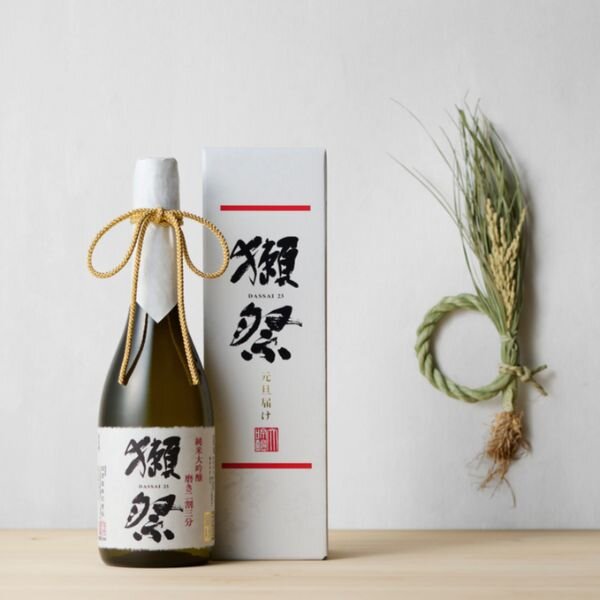DASSAI 23 Hayata
By pasteurizing sake, enzymes and yeasts are deactivated, thus improving the preservation of the sake.
This technique has been known among toji (master brewers) since the end of the Muromachi period (1336-1573) when it was known as nizake. It was then further refined and developed into a technique known as hi-ate, which has made sake one of the world's rarest preservative-free alcoholic beverages.
Furthermore, at Asahi Shuzo we are not afraid of the high cost of heat pasteurization: after filling the bottles at a low temperature (below 5°C), we use a hot water shower method to heat pasteurize our sake and then immediately cool it down to minimize the damage caused by the heat to the sake.
However, even with the most careful heat sterilization, it is still inevitable that the heat would alter the quality of the sake, but by adding micro-bubbled* carbon dioxide to the sake, it is now possible to achieve the same results in less than 15 seconds at 65°C.
*Patent 2013-008455 (Applicant: Nippon Medical School / Asahi Shuzo Co., Ltd.)
The development of this method began as a collaboration between the late Professor Yasuyoshi Hayata of Meiji University and Asahi Shuzo . After he passed away unexpectedly, the research was continued by his student, Assistant Professor Fumiyuki Kobayashi of the Nippon Medical School Group,and we finally succeeded in commercializing the method in 2016.
We would like to express our sincere respect and gratitude to Dr. Hayata for his achievements. The name of the sake, "Dassai Hayata 23", is a tribute to the work of the late Dr. Hayata.
by Dassai's Kuramoto - Hiroshi Sakurai
Yamada Nishiki rice - polished down to 23% of the original grain weight.



























